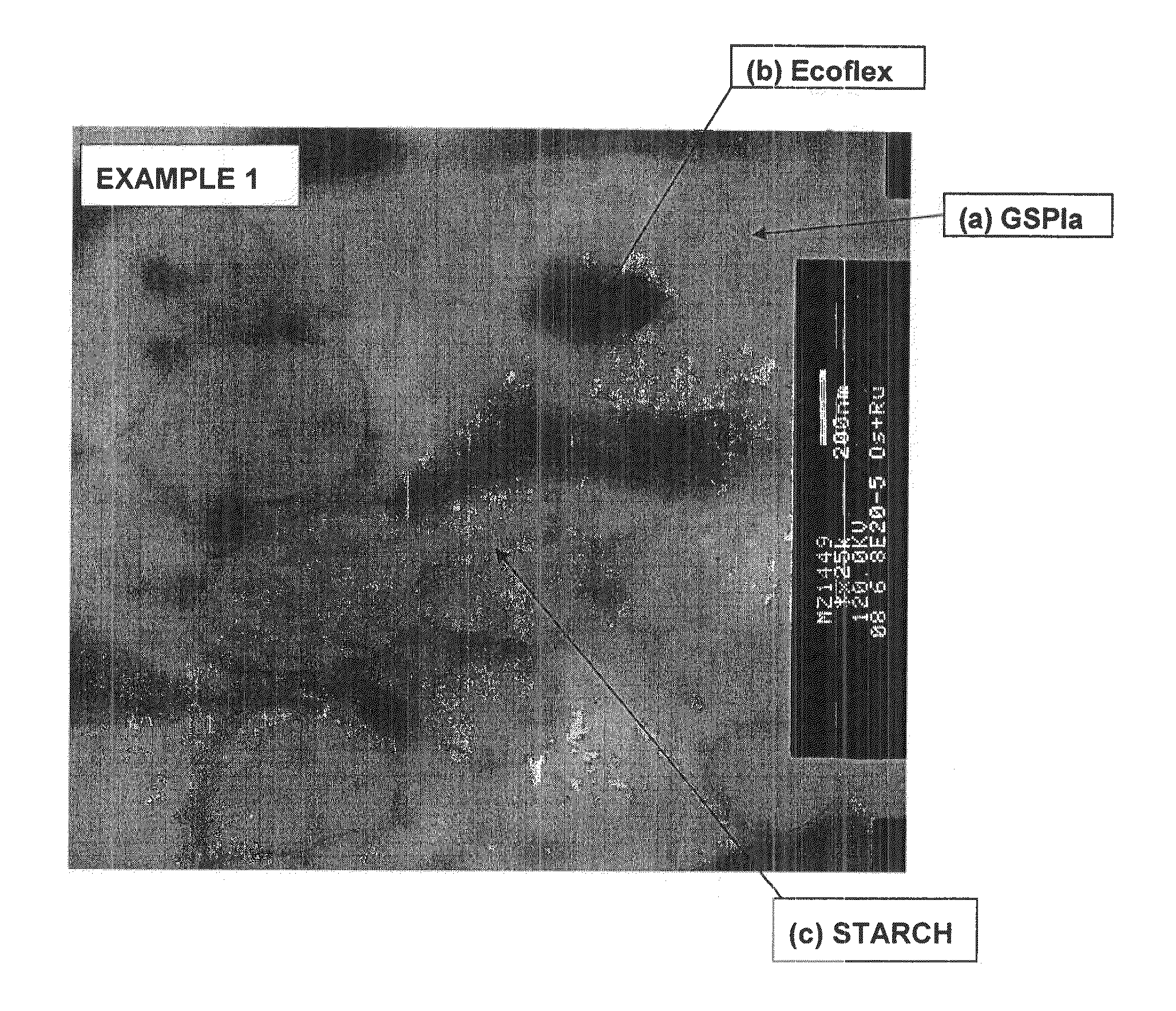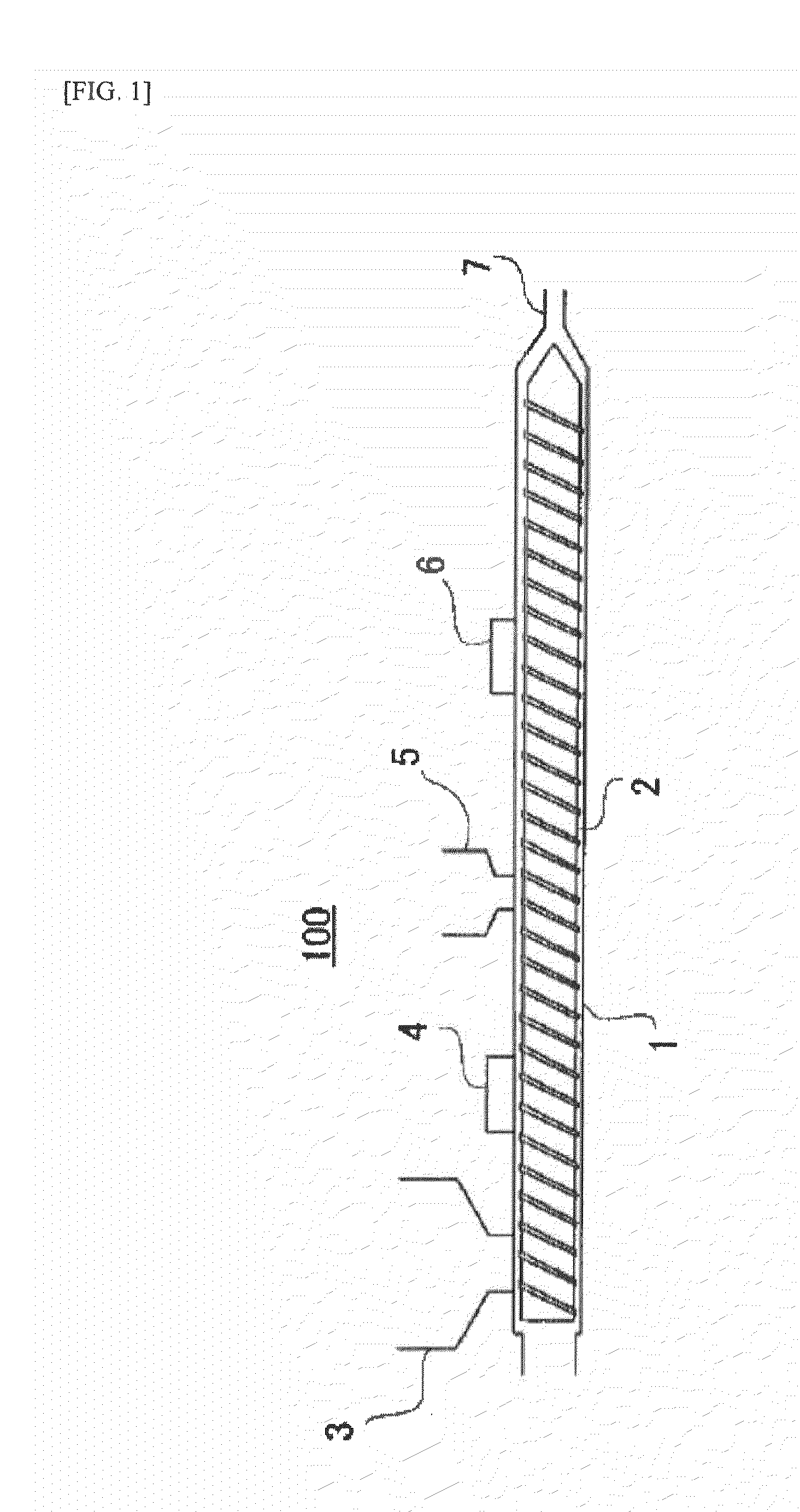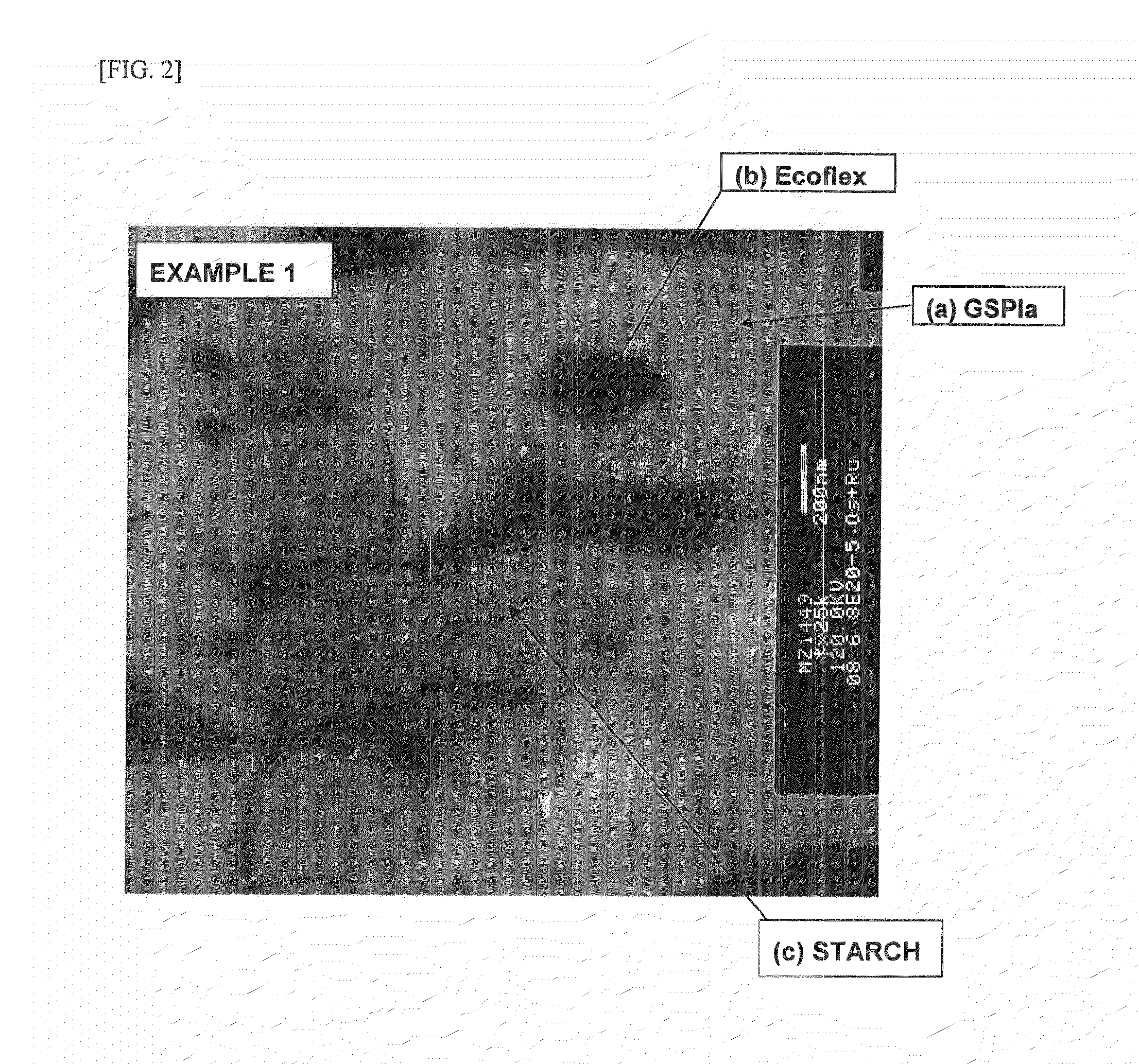Resin composition, film, bag product and production process of resin composition
- Summary
- Abstract
- Description
- Claims
- Application Information
AI Technical Summary
Benefits of technology
Problems solved by technology
Method used
Image
Examples
example 1
[0205]36 Mass % of the starch (C), 18 mass % of the thermoplastic resin (B) and 6 mass % of the plasticizer (D) for starch were kneaded using twin-screw extruder TEX30 (22 cylinder, L / D=77) manufactured by Japan Steel Works Ltd. During kneading, the temperature was set to 80 to 150° C. and the screw rotation speed was set to 150 to 300 rpm. After removing water vapor through a vent part, 40 mass % of the aliphatic polyester-based resin (A-2) was further side-fed and kneaded. The obtained resin composition was extruded in a strand form from a die, cooled in a water tank and cut to obtain a white pellet. FIG. 2 shows a TEM photograph of the pellet section. It is seen from FIG. 2 that the obtained pellet has a special morphology that GSPla forms a matrix phase and the starch and Ecoflex each forms a dispersed phase. Also, from the TEM observation image of the pellet, the average particle diameter of the starch phase was calculated to be 0.3 μm.
[0206]The obtained pellet of the resin com...
examples 2 and 3
[0208]Pellets were obtained by the method in accordance with Example 1 except for changing the amount ratio of respective components as shown in Table 1. The pellet specimens were observed by TEM and each was confirmed to have a special morphology that, similarly to Example 1, GSPla forms a matrix phase and the starch and Ecoflex each forms a dispersed phase. Also, from the TEM observation image of each pellet, the average particle diameter of the starch phase was calculated to be 0.3 μm. Furthermore, each pellet was inflation-molded in the same manner as in Example 1. The contents implemented and the evaluation results of the obtained film are shown in Table 1.
example 4
[0213]The pellet of the resin composition obtained in Example 1 was directly inflation-molded in the same manner as in Example 1 except for not being dried. The water amount of the pellet subjected to molding was 2.1 mass %. The contents implemented and the evaluation results of the obtained film are shown in Table 1.
[0214]The film of Example 4 could be shaped in a cylindrical form, but the inner surfaces of the film were fused together and this film was inferior to the film of Example 1.
PUM
| Property | Measurement | Unit |
|---|---|---|
| Length | aaaaa | aaaaa |
| Fraction | aaaaa | aaaaa |
| Percent by mass | aaaaa | aaaaa |
Abstract
Description
Claims
Application Information
 Login to View More
Login to View More - Generate Ideas
- Intellectual Property
- Life Sciences
- Materials
- Tech Scout
- Unparalleled Data Quality
- Higher Quality Content
- 60% Fewer Hallucinations
Browse by: Latest US Patents, China's latest patents, Technical Efficacy Thesaurus, Application Domain, Technology Topic, Popular Technical Reports.
© 2025 PatSnap. All rights reserved.Legal|Privacy policy|Modern Slavery Act Transparency Statement|Sitemap|About US| Contact US: help@patsnap.com



